Call US
24/7
Free Confidential case Evaluation
(813)922-0228Call US
24/7
Free Confidential case Evaluation
(813)922-0228Loading...


I’ve spent years at Carter Injury Law representing people whose lives were turned upside down after a rideshare accident. These cases aren’t like ordinary fender benders. The moment an Uber or Lyft vehicle is involved, the questions multiply. Was the app on or off? Whose insurance applies? Can the company itself be held responsible, or will the driver be left carrying the weight?
I’ve seen hardworking commercial drivers lose their licenses, families struggle to pay medical bills, and victims wait months for clarity while insurers argue over coverage. The law in Florida is supposed to provide order in these situations, but in reality it often feels like a shifting maze.
And the truth is, the single detail that decides the fate of most of these cases is something few people even think to ask at the crash scene…
The key detail in a rideshare crash is the driver’s app status. Was the app switched off, turned on but waiting for a fare, or was there a passenger already in the back seat? That single fact changes everything, because insurance coverage in Florida rises and falls with the app.
When the app is off, drivers are usually left with only their personal auto policy. Once the app is on, but before a ride is accepted, there’s limited contingent coverage that rarely comes close to covering serious injuries. And when a passenger is in the car, that’s when the rideshare company’s million-dollar policy often kicks in.
I tell my clients this because the insurance policy that applies determines whether victims are fully compensated or left fighting over scraps. It also decides whether a commercial driver with a CDL (Commercial Drivers License Program) ends up with a career-ending problem, which I’ll explain later. And if you’re assuming you can sue the rideshare company directly, be careful. Florida courts have been siding with Uber and Lyft, treating their drivers as independent contractors. That means the company’s shield is strong but not impenetrable.
And then there’s the darker side of these cases, the staged crashes and fraud rings that make insurers even more aggressive. If you don’t protect your evidence, you risk being caught in a fight you never asked for.
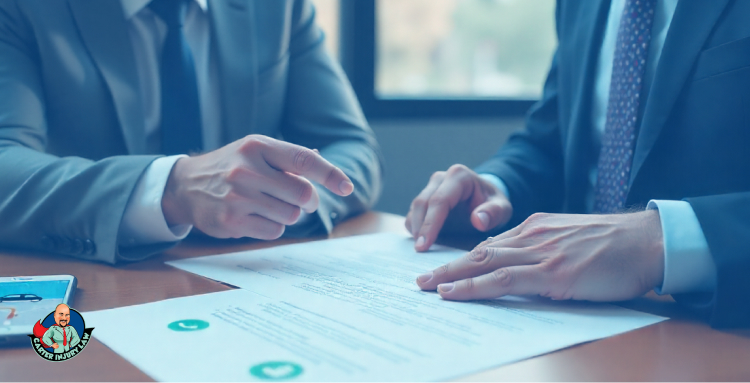
Most people assume they can hold Uber or Lyft directly accountable after a crash. It feels natural, right? The driver was working for the company, so the company should pay. However, Florida law doesn’t always work that way.
Courts here have leaned toward protecting rideshare giants. Judges often rule that drivers are independent contractors, not employees, which means the companies avoid automatic responsibility for their drivers’ mistakes. That doesn’t mean the companies are untouchable, but it does mean you need a strategy.
In my practice, I’ve seen victims frustrated when they realize they can’t simply go after the deep pockets. Instead, we dig into the facts, the app records, and the insurance triggers to build a case. The driver, the insurance company, and the available coverage often become the real battlefield.
And here’s where things get more complicated. If that driver happens to be a CDL holder, the fallout isn’t just about paying claims. A single violation can threaten their license and their livelihood. I’ll explain how federal and state rules collide with rideshare accidents, and why commercial drivers often have far more at stake than they realize.
Then there’s another twist, one that catches people off guard, the rise of staged crashes and fraud schemes targeting rideshares, which make insurance companies even more aggressive in their defenses. That’s where preserving evidence becomes significant.
If you hold a commercial driver’s license, a rideshare accident can do more than cost you money; it can cost you your career.
Here’s why. Commercial drivers operate under federal rules set by the FMCSA (Federal Motor Carrier Safety Administration) as well as Florida’s own CDL laws. These rules create a separate track of consequences, ones that kick in even if your insurance claim is still pending or your civil case hasn’t been decided.
Take this example. A rideshare driver with a CDL gets into a crash. If the police report shows a major violation, like DUI, leaving the scene, or reckless driving, the FMCSA rules require automatic disqualification of that license. The first offense can sideline a driver for a year or more. A second can mean losing the license permanently. And here’s the tricky part, those rules apply even if the violation happens while driving a personal car, not just a semi-truck.
Even so-called “serious violations,” like excessive speeding or following too closely, stack up fast. Too many in a short window and the CDL is suspended. That means a driver could technically win their civil case but still lose the ability to drive commercially.
I’ve counseled drivers who were blindsided by this, because they thought the insurance payout was the whole battle. In truth, the CDL consequences often matter more than the lawsuit, because no license means no livelihood.
And this ties directly back to the earlier sections. If the rideshare company avoids liability, and the insurance company points to gaps in coverage, the driver may be left carrying not just the financial fallout, but also the career-ending penalties. And remember, fraud and staged crash investigations can trigger criminal charges too, which take the risks to an entirely different level.
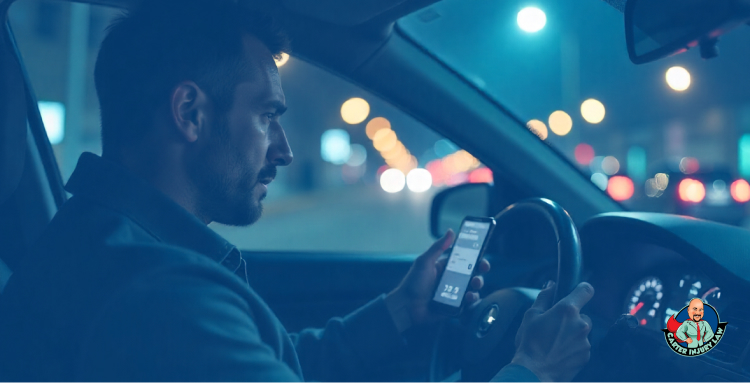
There’s another layer to rideshare accidents that most people don’t see coming, staged crashes.
Florida has become a hotspot for these schemes. Here’s how they work, groups of bad actors intentionally cause or fake accidents involving rideshare vehicles. They then use shady clinics and sometimes even lawyers to inflate medical bills and file lawsuits. On paper, it looks like a legitimate claim. In reality, it’s organized fraud.
Why does this matter if you’re the innocent driver or passenger caught in the middle? Because insurance companies treat every rideshare crash with suspicion, even the genuine ones. I’ve represented clients who were telling the truth but still faced delays, denials, and aggressive defense tactics because insurance companies thought the crash might be part of a scam.
The really dangerous part for drivers, especially CDL holders, is that if your name shows up in one of these investigations, you could be dragged into civil suits or even criminal inquiries. Even if you had nothing to do with the fraud, the cloud of suspicion can damage your case and your career.
That’s why I tell every client the same thing, document everything. Save your app status, screenshot your ride history, get the names of passengers and witnesses, and take photos of the scene. Fraud rings thrive in the absence of proof. Solid evidence is your best protection.
And this circles back to the bigger picture, insurance companies fighting to avoid payouts, rideshare corporations shielding themselves behind contractor rules, and commercial drivers staring down career-ending penalties. Which is why the closing message is simple, you can’t afford to go through this alone.
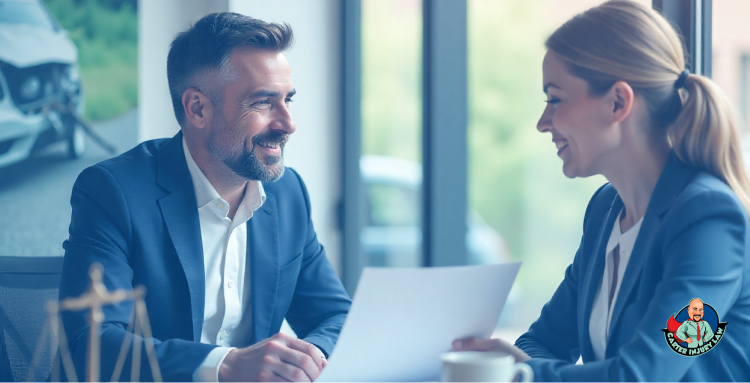
When I look back at the cases I’ve handled, the common thread is this, rideshare accidents touch on shifting insurance rules, company liability defenses, federal CDL regulations, and even the risk of staged crash fraud. Every detail matters, and missing one can cost victims fair compensation or cost drivers their livelihood.
That’s why at Carter Injury Law, we fight to level the playing field. I know what the rideshare companies will argue, I know how insurance companies stall, and I know the traps that commercial drivers face when their CDL is on the line. My role is to cut through the noise, protect your evidence, and give you the best chance at a fair outcome.
And here’s something else I want you to know, we work on a contingency fee basis. That means you pay nothing up front. We don’t get paid unless we win for you. This structure lets you focus on recovery, not on how you’ll afford legal help.
So if you’ve been hurt in a rideshare crash, or if you’re a commercial driver worried about what a single accident could mean for your career, don’t try to go at it alone. Call me at Carter Injury Law. Your rights, your license, and your future are too important to leave to chance.
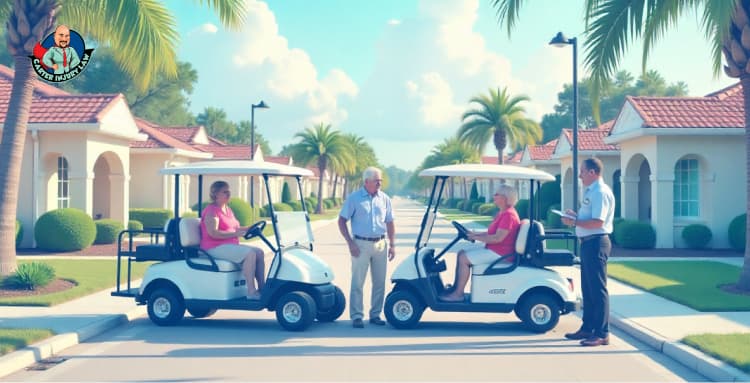
I have lived and worked in Florida long enough to know that golf carts are more than a way to get around the greens. In retirement communities, they are part of daily life, as common as front porch chatter and morning walks. I see them lined up outside grocery stores, moving along quiet roads, sometimes even carrying more grandchildren than groceries. They make life easier, and for many, they make life possible.
However, in my office at Carter Injury Law, I hear the other side of that story. The calls come from families blindsided by a crash that never should have happened. A neighbor’s cart tipping on a curve. A driver who did not notice the stop sign. A path so poorly lit it might as well have been invisible. These aren’t harmless mishaps. Broken bones, head injuries, and lifelong medical bills often follow.
The hardest part for most people is not only the injury however, the confusion that comes after. Who is responsible? The driver? The retirement community? The manufacturer of the cart itself? The law has answers, however, they are rarely simple. And if you are living in one of Florida’s retirement communities, you might be surprised at just how much turns on a single detail…
When I sit down with clients after a golf cart accident, I always start by asking about the moment before it happened. More often than not, the story begins with something that looks ordinary. A cart turning a little too fast. A driver chatting with a passenger instead of keeping eyes on the road. A path that had been patched so many times it felt like a trap waiting for wheels.
Speed is a common thread. Golf carts were never built to handle sharp turns at higher speeds, yet I have seen too many cases where a few extra miles per hour led to a rollover and someone thrown from their seat. The carts themselves don’t offer much protection. No airbags, thin frames, open sides. When they tip, the body takes the full force.
Then there’s the problem of sharing the road. In many Florida communities, golf carts and cars weave around each other on the same stretches of asphalt. One distracted driver in a sedan can change a quiet afternoon into a disaster. I have handled cases where a cart had the right of way, however, the car driver never saw it coming until it was too late.
Infrastructure is another culprit. Poor lighting, missing stop signs, uneven pavement. Retirement communities promise safety and ease, however, when corners are cut in maintenance, residents end up paying the price with their health.
Each cause seems simple when you pull it apart, however, in the aftermath of an accident, the question is never just what happened. It is who allowed it to happen, and that is where liability takes center stage.

When clients come to me after a golf cart accident, their first question is almost always the same: Who is responsible for this? The answer depends on the details, however, Florida law has some clear lines that I’ve seen play out again and again.
The driver is often the starting point. If someone was careless, driving too fast, or ignoring the rules, their negligence can put them on the hook. however, it doesn’t stop there. Florida treats golf carts as what the law calls “dangerous instrumentalities.” That means the owner of the cart can be held liable even if they weren’t the one behind the wheel. I’ve handled cases where a cart was loaned to a friend or family member, and the owner still carried legal responsibility for the damage that followed.
Retirement communities and homeowners’ associations are not exempt either. If a crash happens because the paths were poorly maintained, lighting was missing, or signage was confusing, the community itself may share liability. They owe a duty to keep residents safe, and when they fail, people get hurt.
Sometimes it isn’t the driver or the community. I have seen cases where a defect in the golf cart, like a brake failure or a steering problem, made the accident inevitable. In those situations, the manufacturer or repair shop might be the party we hold accountable.
Liability is rarely clean-cut, and often, more than one party shares the blame. Florida’s system allows fault to be divided, and that’s where things become complicated. Add in questions of insurance coverage, and the simple idea of responsibility quickly turns into a maze.
And that’s the point where most people realize the real challenge is not just proving fault however, understanding how Florida law and insurance rules decide what happens next.
I wish I could tell clients that golf cart accidents follow the same rules as car accidents, however, that isn’t true. Florida law carves out special lanes for golf carts, and understanding those rules can change the entire outcome of a case.
For example, under Florida Statute 316.212, golf carts are only allowed on certain roads and under certain conditions. If a driver takes a cart somewhere it shouldn’t be, like a busy public street not designated for carts, that detail can shift how liability is assigned. It can even affect whether insurance coverage applies at all.
And insurance is where most people get caught off guard. Many assume their homeowner’s or auto insurance will automatically cover golf cart accidents. In reality, those policies often exclude carts unless you’ve purchased specific coverage. I’ve had clients facing hospital bills and rehabilitation costs only to find out the policy they trusted didn’t extend to the vehicle they used every day.
Florida also follows comparative negligence, which means more than one party can share the blame. If you were driving a cart slightly over the speed limit however, the other driver failed to yield, both of you may be assigned percentages of fault. Compensation is then reduced according to that split. It’s a fair system in theory, however, in practice, it can feel punishing for someone already injured.
The mix of law and insurance creates a puzzle that most people don’t have the energy to solve after an accident. That’s why I step in to gather the facts, apply the statutes, and push back when insurers try to deny coverage.
however, knowing the law is only half the battle. What matters most in the hours and days after a crash are the choices you make, and that’s why I always tell my clients to follow a few critical steps right.

When someone calls me in the hours after a crash, they’re often overwhelmed and unsure where to start. The steps you take right after an accident can make or break your case. Over the years, I’ve narrowed it down to the essentials.
First, get medical attention immediately. Even if you feel fine, golf cart accidents often cause injuries that don’t show up right away. I’ve seen clients ignore dizziness or soreness only to discover a concussion or fracture days later.
Second, document everything. If you can, take photos of the scene, the cart, the road conditions, and any visible injuries. Ask for witness names and contact information. Keep any maintenance records if the cart was yours. These small details often decide liability when the story is disputed later.
Third, report the accident. Notify community security, management, or law enforcement. An official report adds weight to your case and prevents the other party from rewriting the story.
Fourth, contact a lawyer early. Evidence fades fast, paths get repaired, witnesses move, and carts get fixed or scrapped. I step in to preserve those details before they disappear, and I know what to look for that most people miss.
In those first days, it’s easy to feel powerless; however, the truth is you have more control than you think. Your actions can protect your health, your finances, and your right to hold the responsible party accountable.

After handling so many of these cases, I’ve come to believe that golf carts represent both freedom and risk in Florida’s retirement communities. They let people stay mobile, social, and independent; however, one accident can turn that freedom into months of pain and financial strain.
My team and I work with clients across Florida who are facing these very situations. We handle golf cart accident cases on a contingency fee basis, which means you don’t pay us unless we win for you. That way, you can focus on healing while we focus on the fight.
I’ve seen too many people assume they have no recourse or wait too long to explore their options. The sooner you act, the stronger your case becomes. If you or someone you love has been injured in a golf cart accident, reach out. Let’s talk through what happened, uncover who is truly liable, and take the next steps together.
Because in the end, these communities were built to give you peace, not chaos. My job is to help you get that peace back.
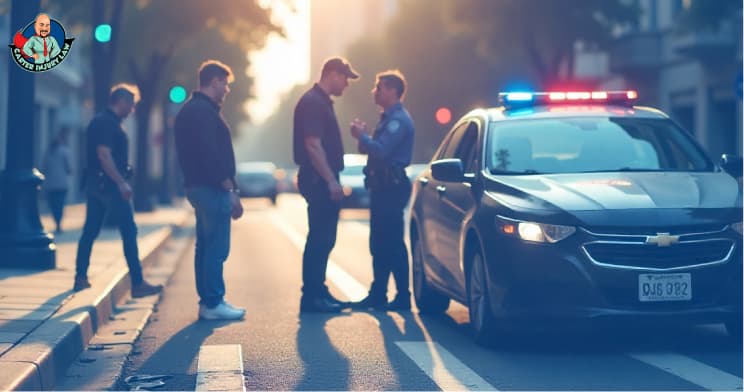
I’ve spent years sitting across from people whose lives were turned upside down in the space of a crosswalk. One moment you are heading home with groceries in your hand, the next you are on the ground, blindsided by a car with an Uber decal in the window. I’ve listened to the way people describe that mix of shock, pain, and disbelief, and I never forget it.
What troubles me most is how quickly a pedestrian goes from being the clear victim to being treated like they somehow caused their own injuries. Insurance adjusters are trained to turn sympathy into suspicion, and they do it fast.
That’s where my work begins, and why I never take these cases lightly. Because the truth is, the rideshare driver isn’t the only one you’re really up against...
When you are on foot, the law does not see you as powerless, it sees you as protected. Drivers owe pedestrians a duty of care every time they get behind the wheel. That means they must stay alert, follow traffic laws, and yield when required. It sounds simple, but I’ve seen too many cases where a distracted glance at a phone or a rushed turn across an intersection leaves someone badly hurt.
If you are in a marked crosswalk, Florida law gives you the right of way. That’s not a suggestion, it’s a legal command that drivers are expected to respect. At the same time, the law is not blind to reality. Pedestrians are expected to use reasonable care too, which means not stepping into traffic against a signal or walking out from between parked cars in the dark. Still, even in those gray moments, you are not automatically at fault.
One of the most common questions I hear is, “Do I even have a case if I wasn’t in the crosswalk?” My answer is always the same: your rights do not vanish just because you weren’t standing on painted lines. Fault in Florida is shared based on the circumstances, not decided in a snap judgment.
That distinction matters, because insurance companies thrive on twisting blame. My role is to make sure the focus stays where it belongs, on the driver who failed in their duty to keep you safe. That is the starting point for every case I take.
In any rideshare accident, the key factor is the driver’s status at the moment of impact. Coverage depends on whether the Uber or Lyft app was on, off, or in use. This single detail can be the difference between fighting over a driver’s personal policy and having access to a million-dollar insurance plan.
Here’s how it works in practice. If the app is off, the driver is just another motorist. That means their personal insurance is what applies, and if it’s the bare minimum, the coverage may be thin.
If the app is on but no ride has been accepted, there is limited coverage available. It’s better than nothing, but it rarely covers the true cost of serious injuries.
The turning point comes when the driver has accepted a ride or has a passenger in the car. That’s when Uber and Lyft’s full commercial coverage applies, often up to one million dollars for injuries and damages. In my experience, this is where the battle with the insurance companies becomes most intense, because now they have far more to lose.
The problem is, the rideshare companies will not volunteer this information. I’ve seen them drag their feet on confirming a driver’s status, and I know how quickly evidence can get lost in the shuffle. That’s why I press hard, right from the start.
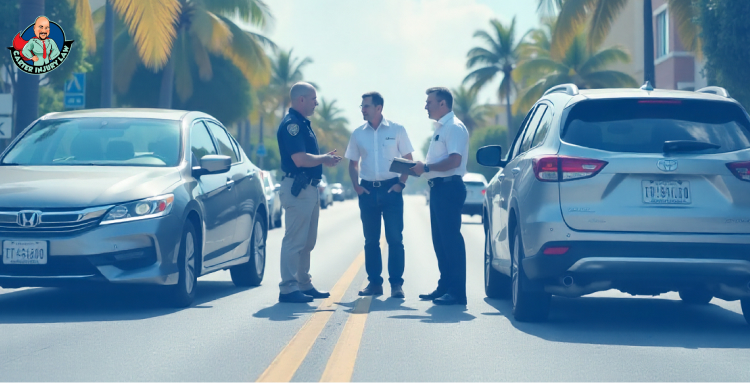
After nearly every pedestrian accident, I hear the same worry: What if I was partly to blame? Maybe you crossed outside a crosswalk, maybe the light had just turned, maybe you were looking at your phone. In Florida, those details matter, but they do not erase your rights.
Florida follows what’s called comparative negligence. If you are 50% or less at fault, you can still recover damages. Your compensation is reduced by your share of responsibility, but it doesn’t disappear. For example, if a jury finds you 20% at fault because you crossed mid-block, and your damages are $100,000, you can still recover $80,000.
The line is drawn at more than 50% fault. If the driver’s insurance can convince a court or jury that you were mostly to blame, your recovery ends there. This is why their adjusters are trained to pounce on every tiny detail of your actions. They will ask about where you were standing, what you were wearing, whether you hesitated before stepping forward.
That’s where I come in. My job is to make sure fault is not twisted or exaggerated against you. A distracted driver in a two-ton vehicle has far more responsibility than a person trying to get across the street. The law recognizes that difference, but only if someone insists on it.
Comparative fault is meant to share responsibility fairly, not to let billion-dollar insurers duck their obligations. And when you know how the system really works, you stop feeling powerless and start reclaiming the ground you lost in that single terrible moment.
After the chaos of an accident, the first thing people ask me is how they are supposed to keep their lives afloat while they heal. Medical bills do not wait, and neither do rent or groceries. That’s why understanding what damages you can recover is not about legal theory, it’s about survival.
The law in Florida allows pedestrians to seek compensation for both economic and non-economic losses. Economic damages cover the tangible costs, like hospital stays, surgeries, physical therapy, and lost wages. If your injuries keep you out of work or force you to change careers, those future losses can also be included.
Then there are the harder-to-measure harms. Pain and suffering, the daily frustration of not being able to move freely, the fear of stepping into a crosswalk again, these are real damages. I’ve seen them eat away at clients long after the stitches healed.
Sometimes the injuries are permanent. A limp that never fully goes away, a scar that changes the way someone looks in the mirror, or the chronic pain that lingers for years. These are life-altering injuries, and the law recognizes their weight.
When I pursue a case, I make sure every one of these losses is put on the table. Because the goal is not just to cover bills, it’s to restore your integrity and give you the means to rebuild your life. That is what damages are truly about.
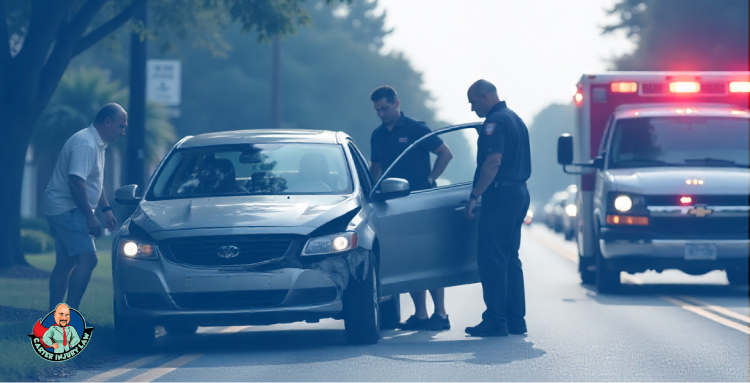
Time is one of the most dangerous enemies after a rideshare accident. The longer you wait, the harder it becomes to protect your rights. I’ve seen critical pieces of evidence vanish because no one moved fast enough to secure them.
Video footage from nearby businesses can be erased within days. Witnesses forget details or disappear. Even the electronic records from Uber or Lyft that show when the app was on can slip away if no one demands them early. Every hour that passes makes the case harder to prove.
Florida also has a strict clock running in the background. You have 2 years to file a personal injury lawsuit, but waiting that long is a mistake. The best cases are built in the days and weeks after the accident.
I always tell clients, calling me quickly does not mean rushing into a lawsuit. It means protecting your story before others try to rewrite it. Insurance companies are already moving against you from the moment the crash is reported. The sooner I step in, the sooner I can lock down evidence, secure medical documentation, and push back against the adjusters trying to minimize your claim.
In cases like these, delay can cost justice.
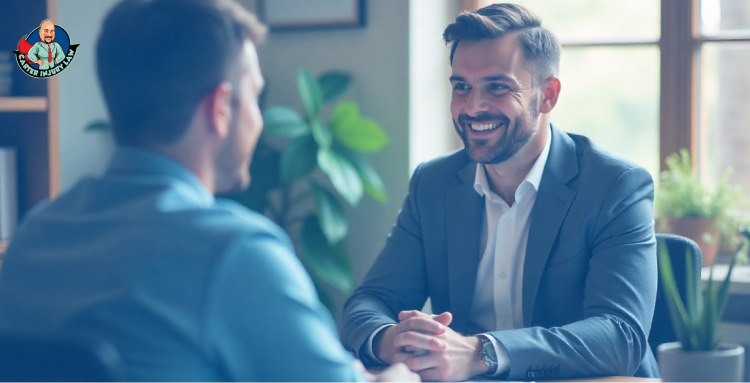
When I take on a case, I see people who are just trying to get their lives back on track. You did not ask for this accident, and you should not have to carry the weight of it alone. My role is to stand between you and the insurance companies, to make sure your rights are not just words on paper but real protections you can rely on.
We work on a contingency fee basis. That means you owe us nothing unless we win your case. I’ve always believed justice should not depend on the size of your bank account. If you are facing medical bills, lost wages, and the pain of recovery, the last thing you need is another bill for legal fees.
When I fight these cases, I fight them as if it were my own family in your place. I push back against every attempt to shift blame, I chase every piece of evidence, and I press every insurer to honor their obligations.
Because at the end of the day, you are a person who deserves dignity, protection, and a fair chance at recovery. That is why I do this work, and why I will not back down.

Accidents between golf carts and cars are no longer a rarity in Florida’s neighborhoods. What was once a quiet ride to the clubhouse or a leisurely spin around the block can suddenly turn into a dispute about responsibility, insurance, and medical bills. Unlike ordinary car accidents, these collisions bring a special kind of confusion because golf carts live in a legal gray zone.
As an attorney who has guided many Floridians through this very situation, I can assure you the question is not as simple as asking, “Who hit who?” Liability depends on state laws, insurance coverage, and sometimes even the design of the neighborhood itself.
So when a golf cart and a car collide just outside your front door, who truly ends up paying the price? The answer may surprise you...
A golf cart, in legal terms, is a vehicle designed for speeds under 20 miles per hour, usually restricted to golf courses, gated communities, and local roads approved by municipalities. By contrast, once a cart is modified to travel between 20 and 25 miles per hour, it graduates into the category of a low-speed vehicle (LSV), which places it squarely under motor vehicle regulations. That small jump in speed can mean the difference between an accident being handled like a casual mishap or being treated as a full motor vehicle claim.
Cars, of course, require insurance, registration, and compliance with Florida’s no-fault system. Golf carts, however, often carry none of those requirements unless classified as LSVs. This gap creates the very confusion that so many families encounter after an accident.
And this naturally brings us to the heart of the matter. If an accident does occur, who can actually be held responsible? the golf cart driver or the car driver, the owner of the cart, or perhaps even someone else entirely?
When a golf cart collides with a car, neighbors often assume that blame is obvious. Yet in Florida law, responsibility is rarely that simple. Liability may rest with more than one party, and sometimes it extends to people who were not even present at the accident scene.
The Golf Cart Driver
If the cart operator was speeding, distracted, or ignoring posted signs, the law will likely point to that driver as the primary cause. Even though a golf cart seems less serious than a car, negligence is negligence, regardless of the vehicle’s size or speed.
The Car Driver
On the other hand, when a motorist is careless, such as failing to yield, driving too fast through a residential street, or becoming distracted, the balance of fault may shift. Car drivers have a duty to anticipate golf carts in communities where they are common. Failing to do so may expose them to liability.
The Golf Cart Owner
Florida applies what is known as the dangerous instrumentality doctrine. This doctrine holds that if you lend out your golf cart, you may still be legally responsible for the damage caused, even though you were not driving. Many owners are caught off guard by this rule, but it remains a powerful part of Florida liability law.
Property Owners and HOAs
Sometimes, accidents happen because of poor maintenance of neighborhood roads, inadequate signage, or poorly marked golf cart crossings. In such cases, homeowners associations or property managers may share the blame. These situations tend to be complex, requiring close examination of contracts, bylaws, and maintenance records.
Manufacturers and Mechanics
In rarer cases, a golf cart accident stems from a mechanical defect or faulty repair. Here, the manufacturer or repair shop may bear responsibility. While less common, these cases remind us that liability can stretch far beyond the immediate drivers.
It becomes clear that Florida law casts a wide net when assigning responsibility. Yet even once liability is determined, the question remains, how does insurance coverage actually come into play when one party drives a car and the other a golf cart?

In a lot of accidents, it’s often not just one driver at fault. Florida follows what is known as the comparative negligence rule, which means that liability is divided according to each party’s share of responsibility.
Under this rule, a jury or insurance adjuster may decide, for example, that a golf cart driver was 40% at fault for driving too fast through an intersection, while the car driver was 60% at fault for failing to yield. In that case, the injured golf cart driver may still recover damages, but their compensation would be reduced by 40 percent.
In my practice, I have seen golf cart drivers found partly responsible for carrying too many passengers, while the car driver was faulted for distracted driving. The law does not excuse either party simply because the other was careless. Instead, responsibility is carefully measured, often down to the smallest detail of how the accident unfolded.
This rule means you may seek compensation even if partly at fault, though your recovery decreases with greater blame. Early investigation, evidence collection, and legal guidance are necessary.
Once the fault is determined, the next question is, whose insurance will pay the bills? In Florida, the answer rests on how the law classifies the golf cart and whether the parties involved prepared themselves with the right coverage. Most drivers assume every vehicle on the road must be insured, but state law does not require ordinary golf carts to carry insurance. Yet once a cart qualifies as a low-speed vehicle capable of 20 to 25 miles per hour, it is treated as a motor vehicle, requiring registration, minimum insurance, and compliance with no-fault rules.
Some families believe their homeowner’s policy will protect them in the event of a neighborhood accident, but that is rarely the case. Most policies exclude coverage once the cart leaves the property, and even within gated communities, the terms can vary sharply. When a car driver is at fault, their auto insurance usually pays for damage and injuries. However, when the golf cart driver bears responsibility and no separate policy exists, matters grow more complicated, often forcing victims to pursue the driver or owner personally.
For this reason, I often advise clients to consider optional golf cart insurance. It is not required by law for standard carts, but it can prevent serious financial hardship. Without coverage, a single neighborhood collision can burden a family with medical bills, lawsuits, and long-term financial stress. In my view, such protection is less a luxury than a safeguard against the unexpected.
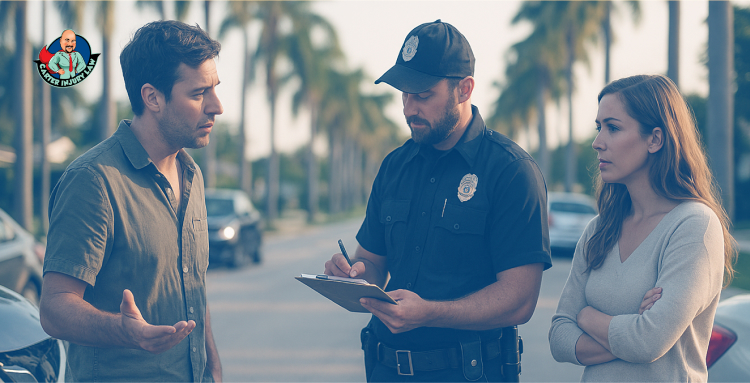
The minutes and hours following a neighborhood accident often shape the entire outcome of a claim. As an attorney, I can confirm that the strength of a case is established from the start. I advise my clients to take the following steps without delay:
Call Authorities and Report the Accident
Even in a quiet residential street, it is essential to involve law enforcement. A police report provides an official record, which later becomes invaluable when insurance companies or courts ask for proof.
Gather Evidence on the Spot
Take photographs of both vehicles, the roadway, and any visible injuries. Collect the names of witnesses. From my time as a lawyer, evidence gathered in the moment is far more persuasive than memories reconstructed weeks later.
Seek Medical Attention Without Delay
Do not dismiss pain as “just soreness.” Hidden injuries often surface hours or days after a collision. Medical records serve a dual purpose: they safeguard your health and they document the direct connection between the accident and your injuries, which insurance companies often contest.
Notify Your Insurance Company urgently
Contact your insurance company as soon as possible, whether you were in the golf cart or the car. Delays give insurance companies grounds to question the legitimacy of your claim. I always remind clients that the words they use when reporting matter; stick to facts and avoid speculation.
Consult a Lawyer Before Problems Multiply
Perhaps the most overlooked step is seeking legal guidance early. In my experience, people wait until insurance companies begin denying claims or shifting blame, by which time their position is weakened. A lawyer can step in immediately, ensuring that your rights are protected and that fault is assessed fairly.
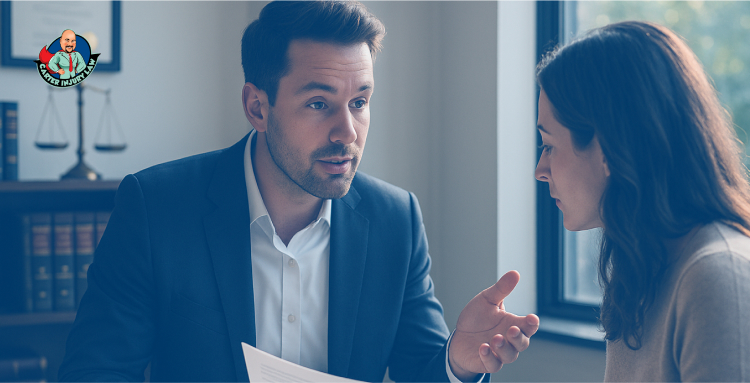
When a golf cart collides with a car, life does not pause to make sense of it. The truth is rarely simple. Insurance companies will argue, neighbors will hesitate, and the people caught in the middle are often left wandering through a swarm of forms and unanswered calls.
In my work at Carter Injury Law, I have seen families pressed under the weight of medical bills, repair costs, and wages that never arrive. My purpose is not just to fight but to restore balance, to remind powerful institutions that your suffering is not negotiable.
There is also the quieter truth. You should be free to heal without the constant noise of dispute. That is what we take on, along with the evidence, the negotiations, and if it comes to it, the courtroom, so that you can breathe again. And because we work on a contingency fee basis, you owe nothing unless we succeed. Reach out to Carter Injury Law, and let us carry this weight with you.

Every year, thousands of cyclists are hurt on Florida roads, and many of those crashes end with more questions than answers. Was the driver reckless, or did the cyclist make a mistake too? In these cases, fault is rarely black and white, and that makes all the difference when it comes to recovering damages.
Florida does not follow the same rules as every other state. Instead, it uses a legal standard that divides fault between the people involved. It directly cuts into how much compensation a cyclist can receive. This system is called comparative negligence, and with Florida’s law changing in 2023, the stakes for injured riders are higher than ever.
In simple terms, comparative negligence is a rule that says when more than one person is to blame in a crash, each person’s share of the blame reduces what they can recover. In other words, if you’re injured but partially at fault, your payout is cut to reflect your part in the accident.
As of March 24, 2023, Florida shifted from a pure comparative negligence system, where you could recover damages even if you were 99 percent at fault, to a modified system. That means now, if you are found to be more than 50 percent responsible for a bicycle crash, you cannot recover any damages at all.
Here’s how it plays out:
If you're 50 percent or less at fault, your compensation is reduced by your percentage of responsibility. For example, a 30 percent assignment of fault on a $100,000 claim means you walk away with $70,000.
If you're 51 percent or more at fault, you get nothing. No compensation, even if the other party clearly did wrong.
Florida’s change fundamentally reshaped how cyclists must think about liability after a crash. Now, small mistakes, such as failing to signal or veering slightly outside a bike lane, could push your fault just past that 50 percent threshold and wipe out your right to recover.
Even modest blame could cost you thousands in compensation or everything. Knowing this legal shift is critical, because it raises the stakes dramatically. And that brings us to the next vital question: how are these fault percentages actually decided, and what evidence matters most when every point counts?
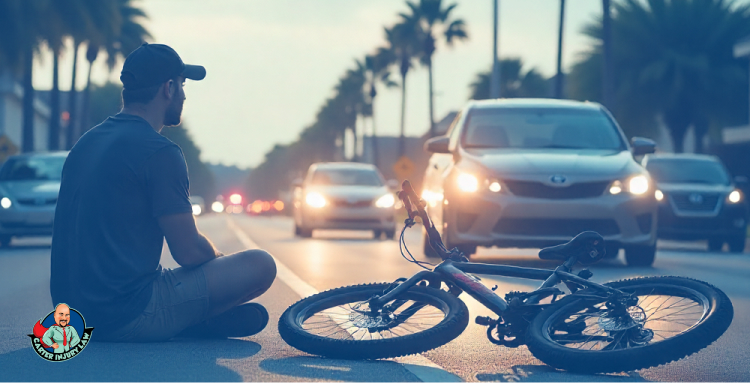
Florida's roads are shared by cyclists and motorists, and accidents often result from a combination of factors. Understanding these common shared-fault scenarios can help cyclists and drivers navigate the roadways more safely.
Drivers Failing to Yield or Speeding in Bike Lanes. Motorists sometimes fail to yield to cyclists or enter bike lanes without proper caution. This behavior can lead to collisions, especially when drivers are speeding or distracted. Such as, a driver turns right without checking for cyclists in the bike lane, causing a crash.
Another one is cyclists riding against traffic or ignoring signals. Cyclists riding against traffic or ignoring traffic signals can create dangerous situations. These actions reduce predictability and increase the risk of accidents.
In bicycle accident cases, establishing fault is crucial for legal and insurance purposes. Various forms of evidence play significant roles in determining liability.
Police Reports, Citations, and Crash Diagrams
Police reports are fundamental in documenting the details of an accident. They often include citations issued to involved parties and crash diagrams that illustrate the sequence of events. However, it's important to note that police-reported crashes may underrepresent non-motorized safety concerns.
For instance, a study revealed that 70% of reported bicycle injury events did not involve a motor vehicle, and 31% of these incidents occurred in non-roadway locations such as sidewalks, parking lots, or off-road trails.
Witness Statements and Testimonies
Witness statements provide firsthand accounts of the accident, offering insights into the events leading up to the incident. These testimonies can corroborate or challenge the accounts of the involved parties. In some legal cases, the credibility and consistency of witness statements have been pivotal in determining fault.
Photos, Surveillance, and Dashcam Footage
Visual evidence, such as photographs, surveillance footage, and dashcam recordings, can offer clear depictions of the accident scene. These materials can capture critical details like the positions of vehicles and cyclists, traffic signals, and road conditions at the time of the accident. Such evidence is invaluable in reconstructing the events and establishing fault.
Expert Analysis in Severe Collisions
In cases involving severe injuries or fatalities, expert analysis becomes essential. Accident reconstruction specialists can analyze physical evidence, vehicle damage, and other factors to determine the cause and sequence of events leading to the collision. Their expertise can be crucial in complex cases where liability is disputed.

In jurisdictions that use comparative negligence, a cyclist's compensation in an accident can be directly affected by their level of fault. Here is how this principle works, which is critical for evaluating potential claims.
Under comparative negligence, if a cyclist is found partially at fault for an accident, their compensation is reduced proportionally. For instance, in Kentucky, if a cyclist is 30% at fault for an accident with total damages amounting to $10,000, their compensation would be reduced by 30%, resulting in $7,000 instead of the full amount . This reduction reflects the cyclist's share of responsibility in the incident.
The application of comparative negligence can significantly affect the recovery of various damages. In states following this doctrine, even if a cyclist is partially at fault, they may still recover damages for medical expenses, lost wages, and pain and suffering, albeit reduced by their percentage of fault.
While not wearing a helmet is not illegal in many areas, it can influence the outcome of a bicycle accident claim. Insurance companies and courts may consider the absence of a helmet as a factor in determining the cyclist's degree of fault. In South Carolina, for example, not wearing a helmet, though not required by law, can be used to argue that the cyclist contributed to their own injuries, potentially reducing the compensation awarded . Similarly, in Wisconsin, failure to wear a helmet may be considered contributory negligence, affecting the damages recoverable.
Therefore, cyclists are advised to adhere to safety regulations, including wearing helmets, to mitigate the risk of being deemed partially at fault in the event of an accident.
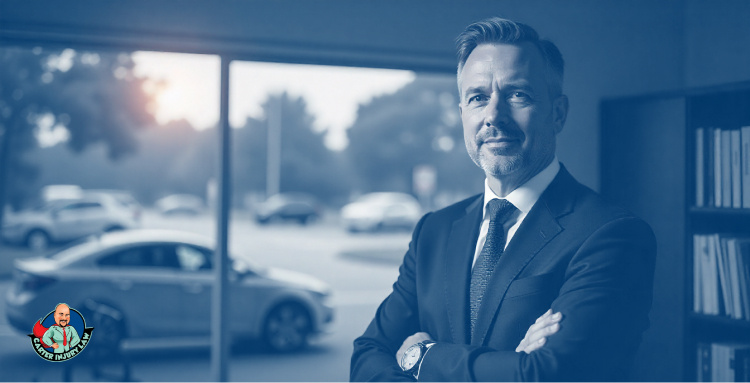
From the moment you reach out, we become your advocate. We explain every step of the legal process clearly, handle the paperwork, and make sure deadlines are never missed. Every question and concern is addressed, allowing you to focus on healing and getting back on your feet.
Insurance companies frequently attempt to reduce payouts, even when fault is obvious. Carter Injury Law can help in this situation. We collect evidence thoroughly, from medical records to accident reports, and we interview witnesses and experts to build a strong, compelling case. We negotiate aggressively with insurers and, if necessary, represent clients in court to secure the compensation they deserve.
We work on a contingency fee basis, which means families and injured cyclists do not pay a penny unless we win. This removes financial barriers and allows you to get the legal help you need without adding stress to an already difficult situation.

Florida’s roads look ordinary, but they run on unwritten rules. A driver eases through a crosswalk, assuming pedestrians will wait. A pedestrian steps off the curb, assuming the law is on their side. Both are wrong. Both are one assumption away from disaster.
These aren’t just bad habits. They are myths, passed along like folk wisdom, shaping how millions navigate streets that already rank among the deadliest in the country. Nearly 6,000 pedestrians die in traffic accidents nationwide each year, and Florida consistently sits near the top for pedestrian fatalities (NHTSA, Traffic Safety Facts).
Some of these myths sound harmless, even logical. Others feel like common sense, too ingrained to question.
The problem is that common sense rarely survives impact. Once you learn which safety rules aren’t really rules at all, Florida traffic looks less like a road and more like a minefield waiting to be mapped.
The phrase sounds like armor. Step into the street, and drivers must stop. In reality, Florida law draws sharper lines. Yes, drivers are expected to yield at marked crosswalks, yet pedestrians can’t simply walk out mid-traffic and claim legal protection. The right of way is conditional, not absolute.
Court records show how quickly assumptions unravel. A driver turning right at a green light collides with a pedestrian rushing across without looking. The driver insists they had the signal. The walker insists the law was on their side. Both end up wrong in different ways. Responsibility is rarely one-sided, and that’s where the confusion begins.
These blurred edges matter because crosswalks are often treated like invisible force fields. They aren’t, and the numbers reveal how dangerous that belief can get.
The white stripes look official, like painted promises of protection. Drivers see them as mandatory stop signs, pedestrians see them as an automatic shield. Reality is messier.
Take a busy intersection in Tampa, Florida. A car in the nearest lane stops for a pedestrian, while a second car in the next lane barrels through. The walker steps forward, assuming all traffic will halt, and the outcome is disastrous. Crosswalks are signals, not guarantees, and they rely on every driver seeing, reacting, and respecting the rules at the same time.
Night adds another layer. Streetlights create pockets of glare that hide movement. A pedestrian dressed in dark clothes blends into the background until headlights catch them too late. Even during the day, distractions shift the odds. A driver fiddling with GPS or glancing at a text may not register the crosswalk until someone is already standing in it.
Studies show that almost 70% of pedestrian fatalities in urban areas happen at intersections, even with marked crosswalks (CDC, Pedestrian Safety Facts). Paint on asphalt is not a force field, no matter how much you trust it.
Florida law makes it clear that drivers must yield, yet pedestrians are expected to cross responsibly. Stepping out suddenly or outside a marked area changes liability in ways that surprise many after an accident. The idea of a safe zone dissolves quickly once lawyers and insurers start measuring timing, distance, and visibility.
This false sense of protection doesn’t stop at the paint. It feeds into another common misconception, walking against traffic automatically makes you safe.

Walking against traffic seems like a simple rule, an automatic safety net. It improves visibility, yet it does not make pedestrians invincible. Turning vehicles, drivers distracted by phones, and sudden lane changes can still create serious hazards.
Florida law expects pedestrians to make careful choices. Facing traffic helps, but it does not remove responsibility or guarantee safety. Accidents still happen when walkers assume they are fully protected.
This misconception sets the stage for another widespread danger: distracted driving, which affects both pedestrians and motorists in ways most people underestimate.
Many people assume distracted driving affects only the driver. The truth is that pedestrians often bear the consequences. Phones, navigation systems, and even quick glances at a dashboard take attention away from the road, and a single lapse can turn a routine walk into an accident.
Florida crash reports show that a significant portion of pedestrian accidents involve distracted drivers. These incidents are not limited to busy intersections; they happen on quiet streets, near schools, and even in residential neighborhoods where walkers feel safe.
A study by the National Safety Council found that driver distraction contributes to nearly 1 in 5 motor vehicle fatalities, including those involving pedestrians, highlighting how inattention on the road directly affects walkers (National Safety Council).
Pedestrians can take steps to reduce risk and protect themselves. Making eye contact with drivers, wearing visible clothing, avoiding sudden movements, and using crosswalks responsibly all improve safety. Staying aware and predictable can also help establish legal clarity if an accident occurs.
Even careful walkers are vulnerable when drivers are distracted. The next challenge comes after dark, when visibility drops and risk increases, exposing another common misconception about nighttime walking.
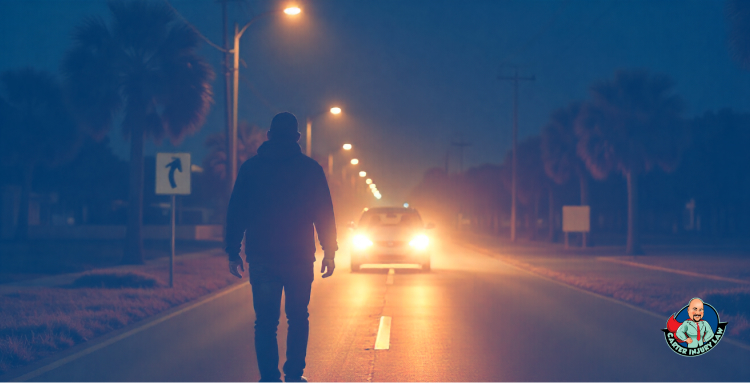
Pedestrians often assume that reduced traffic at night makes streets safer. In reality, Florida sees a spike in pedestrian injuries between sunset and midnight. Lower visibility, faster-moving vehicles, and inattentive drivers all contribute to increased risk.
Common misconceptions that make night walking seem safe:
Visibility is always sufficient, even without reflective clothing.
Streetlights alone guarantee safety at intersections and crosswalks.
Wearing dark or neutral clothing does not increase risk significantly.
Courts consider lighting and visibility carefully in pedestrian injury cases. Judges and juries examine whether a pedestrian took reasonable precautions, including choosing well-lit routes, wearing visible clothing, and crossing at marked locations. These factors influence liability and insurance outcomes.
Understanding nighttime risks naturally leads to a broader legal perspective. Misjudged assumptions about right-of-way, crosswalks, walking direction, distracted drivers, and night visibility all intersect when liability is determined. The next section explores how myths collide with Florida law and what that means for pedestrians and drivers alike.
Pedestrian safety myths do more than create confusion on the street. They directly affect insurance claims and legal outcomes. When a walker assumes right of way or crosses carelessly, insurance companies may argue contributory negligence. At the same time, drivers who ignore crosswalks or drive distracted can face serious liability. How each party acts can determine fault and the compensation victims may receive.
Florida statutes set clear expectations for both sides. Drivers must exercise due care, yield to pedestrians in marked crosswalks, and anticipate potential hazards. Pedestrians are expected to stay alert, cross safely, and avoid sudden moves that put themselves at risk. Courts weigh these responsibilities closely, looking at how both actions contributed to an incident.
Carter Injury Law works with victims to address these myths and protect their rights. The firm helps ensure claims reflect actual circumstances, supporting fair outcomes and proper compensation.
See how other accidents happen and what steps can protect you.
What Should I Do If I Drive Someone Else’s Car and Get Involved in an Accident?
Dog Bites in Florida: What You Need to Know About Your Rights
Safer streets start with simple, practical steps. Pedestrians and drivers can reduce risk by staying alert, following traffic rules, and making predictable choices. Small adjustments often prevent accidents before they happen.
Ways to stay safer include:
Use marked crosswalks and wait for clear gaps in traffic.
Wear visible or reflective clothing, especially at night or in low-light conditions.
Limit distractions such as phones, earbuds, or multitasking while moving.
Learn local traffic laws and city codes to understand rights and responsibilities.
Even with caution, accidents can happen. Carter Injury Law supports victims in these situations, ensuring rights are protected and proper compensation is pursued.
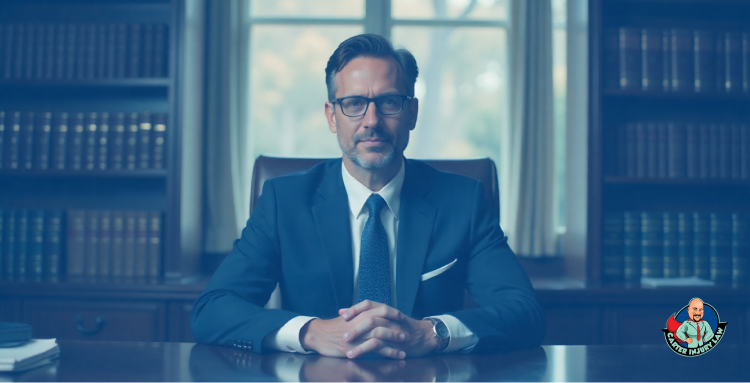
Pedestrian safety is becoming more complicated every day. Busy Miami intersections, crowded urban streets, and even the arrival of self-driving vehicles create new hazards that demand attention from both drivers and walkers.
We help anyone affected by pedestrian accidents caused by these common myths. We investigate every case, explain your rights clearly, and fight to secure fair compensation for medical bills, lost income, and other damages. Best of all, we work on a contingency fee basis, which means there’s no cost unless we win for you.
If you or a loved one is injured despite taking precautions, don’t wait. Contact Carter Injury Law to protect your rights and turn confusion into clarity.

In Florida, the sun never apologizes. It spills across the pavement without care, blinding drivers, throwing shadows across cyclists who cling to their lane as if it were a fragile thread. Riding a bicycle here is not only exercise, it is a wager with chance. One careless turn, one unseen door swinging open, and a life can be split in two.
After the dust settles, there are questions. Who was at fault, who looked away, who sped up instead of slowing down. Memory becomes unreliable, witnesses falter, and the police report feels thin against the weight of injury.
But sometimes there is another voice in the room, small and unflinching, a lens that saw everything. The helmet camera strapped to a rider’s head, the dashcam humming silently in a nearby car. These machines do not forget. The question is, when the video begins to play, whose story will it tell?
The aftermath of a bicycle crash is not a clean equation. It is confusion, police reports written in haste, drivers shifting blame, and cyclists left to fight through pain while their side of the story is doubted. In Florida the law of comparative negligence means responsibility can be divided like a pie, and the size of your slice decides how much compensation you actually receive. Even being found just 20 percent at fault can reduce your recovery by the same amount. Evidence does not just matter, it decides whether your truth is believed.
Numbers remind us of the scale. In 2021 Florida recorded 6,396 bicycle crashes, leading to 182 cyclist deaths, according to the Florida Department of Highway Safety and Motor Vehicles. The state consistently ranks among the deadliest for cyclists in the United States, a grim reminder that riding here is not only about fitness or leisure, it is survival.
Insurance companies know these statistics, and they know how fragile memory can be. They exploit uncertainty, pushing narratives that minimize liability. A helmet camera or dashcam, however, has no reason to lie. When a case hinges on seconds of hesitation or inches of road space, video footage can silence the arguments that otherwise drown the victim.
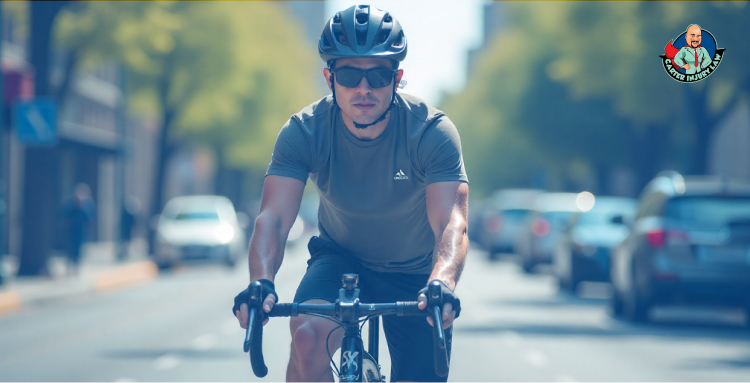
A helmet camera is not just a gadget, it is the rider’s second set of eyes. It does not blink when the car swerves too close, it does not forget the traffic light that flickered red, it does not soften the truth to make anyone comfortable. In the silence after a crash, it becomes the voice of the cyclist who may no longer be able to speak.
Helmet cameras capture more than motion, they capture perspective. They show the world from the rider’s view, where the handlebars tremble at sudden brakes and where the horizon collapses when a collision occurs. Courts and juries trust what they see more than what they hear, and a helmet camera gives them no space for imagination.
What helmet cameras reveal:
The cyclist’s speed, lane position, and signaling before impact.
The behavior of nearby vehicles, including swerves, sudden stops, or aggressive overtakes.
Environmental conditions such as road debris, potholes, or blocked bike lanes.
The split-second decisions that define responsibility, the choice between braking or steering away.
When reviewed frame by frame, this footage can transform a case. What was once an argument of words becomes a story told by light and shadow, impossible to ignore.
Not every cyclist rides with a camera. Sometimes the truth lies in the hands of strangers who never meant to record it. Dashcams on windshields of cars, buses, or rideshares often capture what no one else notices. They become uninvited witnesses, offering a different angle, one that fills the gaps left by memory and chaos.
The challenge is that these recordings are not always volunteered. They must be tracked down, preserved before they are deleted and sometimes subpoenaed if owners hesitate. The footage, once secured, can act like a second narrator, confirming what the cyclist’s own helmet camera might show or revealing a detail missed in the blur of panic.
What dashcams can provide:
A wider view of the accident, showing both cyclist and driver in context.
Vehicle speed and positioning leading up to the crash.
Traffic light status, lane changes, and cross-traffic behavior.
Independent confirmation of the timeline, strengthening the credibility of the victim’s account.
When multiple dashcams are gathered, the narrative becomes stronger. Footage from different vehicles can be stitched together like a patchwork, each clip filling a blind spot of the other. What begins as fragments turns into a complete story, one that stands taller against the denials of insurance adjusters and opposing counsel.
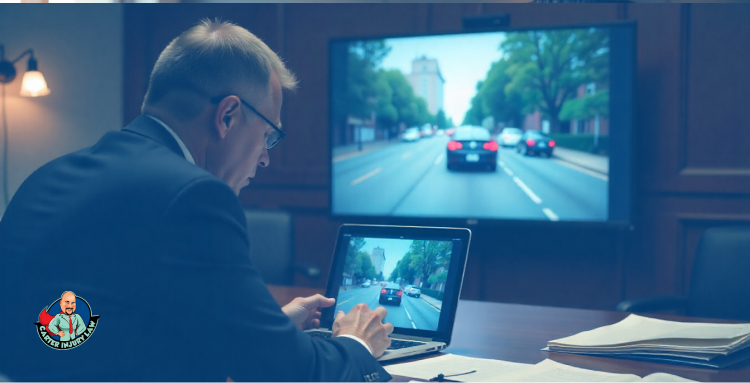
Video evidence may look decisive, but the law is rarely so simple. In Florida, even a clear recording must pass through the filters of admissibility and interpretation. Judges weigh whether the footage is authentic, relevant, and free from tampering. What feels like undeniable proof to a victim can still be challenged, slowed down frame by frame until doubt creeps in.
Privacy questions linger too. Roads are public, but faces and voices are not always meant for the courtroom. Defense attorneys may argue that footage violates privacy rights or fails to capture the full context. However, you have your legal options after a bicycle accident. The camera shows what it sees, but it cannot explain the why behind every movement.
Common obstacles with camera evidence:
Admissibility: Courts must confirm the video has not been altered.
Technical flaws: Blurry images, missing audio, or abrupt starts and stops can weaken impact.
Chain of custody: If the footage is not properly preserved, its credibility can be questioned.
Partial perspectives: A single angle may create as many questions as it answers.
These challenges do not erase the value of cameras, but they remind us that evidence is only as strong as the hands presenting it. A video without context risks being dismissed, its clarity lost in a tangle of legal objections. Even when the camera sees the truth, will the courtroom believe it?
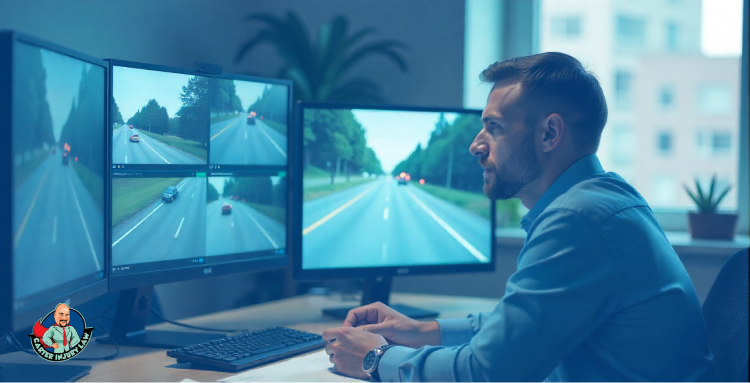
When we take on a case, our work with dashcam and helmet footage begins immediately. We do not wait for truth to vanish into a deleted file or an overwritten memory card. We pursue it, secure it, and prepare it to withstand the scrutiny of the courtroom.
We have seen juries change their faces as the video plays. Words that once felt uncertain are replaced by images that leave no room for denial. In those moments, the cyclist is no longer a victim begging to be believed but a person whose story is undeniable.
We work on a contingency fee basis. That means you pay nothing unless we win for you. We believe justice should not be rationed by wealth, and truth should not be silenced by those who can afford louder voices.
Our strategies include:
Securing and preserving dashcam and helmet camera footage before it is lost or erased.
Cross-referencing the video with police reports, medical records, and eyewitness statements.
Working with forensic video experts to clarify, enhance, and authenticate recordings.
Presenting footage in a way that speaks to juries, so they do not just watch, they feel.
Challenging opposing counsel when they attempt to distort or dismiss what the footage shows.
The lens of a camera can protect you, but only if it is placed in the right hands. Let us be those hands. Reach out today, and let us make certain that your story is not erased by doubt.
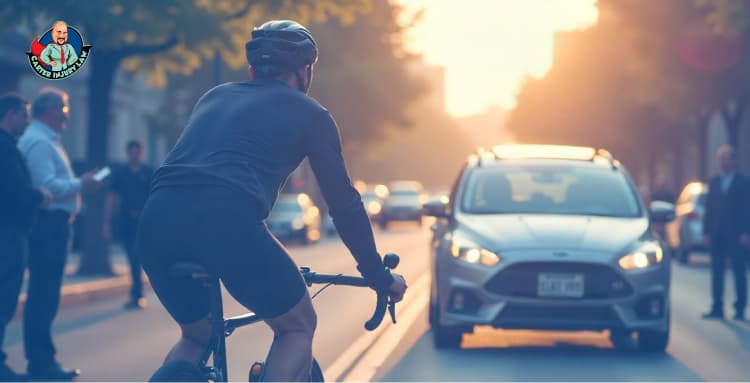
On a Florida highway the traffic runs heavy with trucks that seem as permanent as the sun itself, their trailers gliding through the flat heat of the state. To most drivers they are just background noise, the groan of gears and the hiss of brakes. But when one of those trucks collides with a car, the ordinary world splits open. What looks like a simple wreck rarely tells the full story.
The truth is hidden inside the truck’s own memory, a silent witness that records speed, hours, and moments of fatigue. In Florida courts this small device can become the loudest voice in the room. For the injured it can mean justice. For the unprepared it can mean silence. The real question is, when the black box speaks, whose story will it tell?
Most people imagine a black box as something that belongs to airplanes, but nearly every commercial truck on Florida’s highways carries its own version. This device, technically known as an Event Data Recorder, sits quietly under the hood until the moment of crisis, capturing the truth that often slips past human memory.
Alongside it is the Electronic Logging Device, or ELD, which tracks the driver’s hours, rest periods, and compliance with federal safety rules. Together they form a silent diary of the truck’s journey.
Black Box (Event Data Recorder): Records speed, sudden braking, throttle position, seatbelt use, and impact force in the seconds before and after a crash.
ELD (Electronic Logging Device): Tracks driving hours, required rest breaks, and potential violations of the Hours of Service regulations.
Why It Matters in Florida: These records can make the difference in a state where comparative negligence means even partial fault can reduce or erase compensation.
According to the Federal Motor Carrier Safety Administration (FMCSA), fatigue is a factor in 13% of large truck crashes in the United States. That number may sound small, but for the families whose lives are overturned on I-95 or the Turnpike, it is not a percentage, it is a story. The devices do not lie, but they do not interpret either. In the courtroom, that distinction is everything.
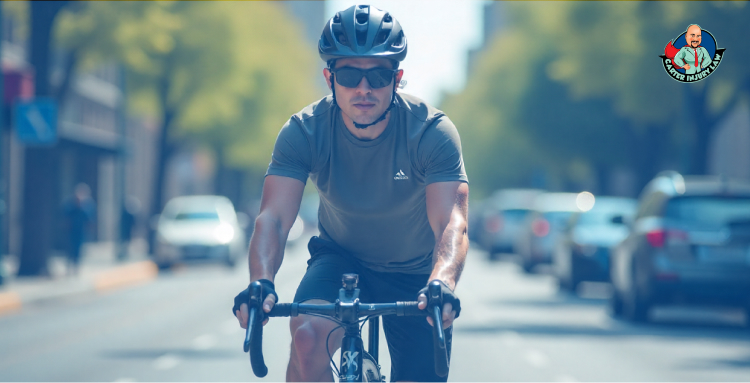
Florida does not deal in absolutes when it comes to accident cases. It follows a rule known as comparative negligence under Florida Statutes §768.81. In practice, this means a jury can decide that fault is shared. If an injured driver is found 30% responsible for a crash, their compensation is reduced by 30%. If they are found mostly at fault, recovery may vanish altogether.
This is where the black box and ELD step in as quiet but powerful witnesses. They capture the parts of the story that human testimony cannot always prove.
Was the truck speeding just before the collision?
Did the driver push past their federally mandated hours of service?
Was there a sudden swerve or a harsh brake that revealed distraction?
Or does the record show careful driving, which might weaken the injured party’s claim?
The answers in those data streams often set the boundaries of a Florida courtroom battle.
The law does not always punish silence, but in Florida, silence from a missing black box can tip the scales. The company’s lawyers may argue that without proof, the burden shifts back to the victim. In that moment, the case is no longer about truth, it is about who acted fast enough to hold on to it.
Every crash on a Florida highway carries two stories. One is told in the chaos of screeching brakes, bent steel, and shaken voices. The other is told in numbers, preserved in a device that does not blink. Courts listen carefully to both, but often the second story carries more weight.
Black box and ELD data can breathe life into a claim, proving a driver sped through the night on too little rest or pressed the accelerator past reason. At the same time, the same records can just as easily protect a trucking company, showing that the driver slowed within the limit or that hours of service were honored down to the minute.
The Federal Motor Carrier Safety Administration reports that nearly 500,000 truck crashes occur nationwide every year, with fatigue, distraction, and speed among the leading factors. In Florida’s comparative negligence system, that distinction between a fatigued driver and a careful one is not academic. It can mean the difference between full compensation and no recovery at all.
The cruel truth is that this data cuts both ways. In the right hands it reveals negligence, in the wrong hands it builds a wall against justice. That is why securing and interpreting it quickly is not just a strategy, it is survival.
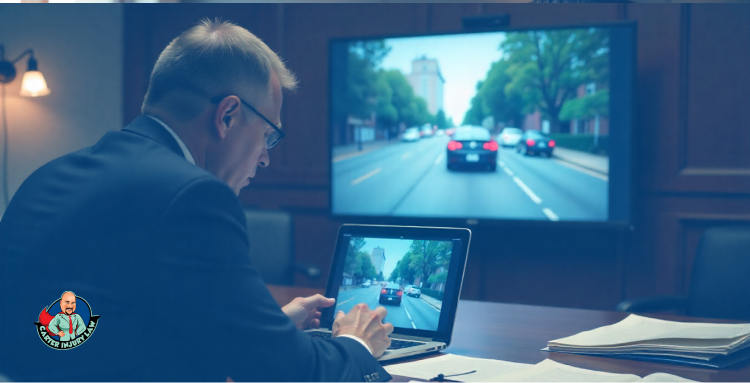
The aftermath of a truck accident often feels like smoke hanging in the air, but the evidence does not wait. Black box and ELD data are fragile records. Many devices overwrite themselves within weeks, some within days. Once gone, they leave only silence.
Florida law gives victims the spoliation letter. This formal notice requires a trucking company to preserve electronic data. Once the letter is sent, destroying or altering that evidence can lead to court sanctions, sometimes shifting the burden of proof in favor of the injured party. Without it, a company can argue that the data was erased as part of routine business, and the court may accept that explanation.
Access is not simple. Trucking companies often resist, arguing that the data is proprietary or that releasing it invades the driver’s privacy. In practice, courts in Florida tend to side with preservation when safety and negligence are at issue, but the battle can be long.
The clock begins the moment metal meets asphalt. For a victim, every day that passes without legal action risks turning truth into ash.
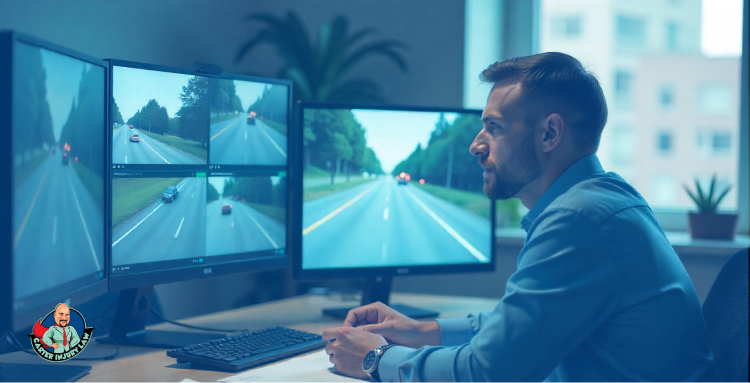
Even when the data exists, it does not automatically work in the victim’s favor. Insurance companies in Florida know the power of black box and ELD records, and they are skilled at using them to protect their own interests. What looks like an objective record can become a tool to shift blame, minimize payouts, or delay justice.
Some common tactics include:
Highlighting selective portions of ELD records to suggest the victim shared fault.
Arguing that a minor discrepancy in logs proves the driver was careless, even if the crash was unavoidable.
Claiming black box data is inconclusive or requires expert interpretation, buying time to weaken the case.
Using missing or partially overwritten data to question the credibility of the victim’s claim.
Understanding these strategies is vital. The difference between an experienced accident attorney and going it alone is the ability to counter these tactics before they define the case. In Florida, a single misinterpreted log entry can turn months of recovery and suffering into a fight for every dollar.
We know that black box and ELD data can be intimidating. Numbers and logs alone do not tell a clear story to a judge or jury. That is why we work with seasoned experts who can translate complex data into clear, compelling evidence.
Our accident reconstruction specialists and data analysts examine the seconds before impact, the driver’s hours, the braking patterns, and even subtle changes in throttle or steering. We turn what looks like a string of numbers into a narrative that reflects exactly what happened on Florida’s highways.
By presenting the data through expert testimony, we make the invisible visible. The judge and jury see more than raw logs; they see the truth of the crash and the responsibility it reveals. This approach allows us to:
Prove whether the truck driver followed hours-of-service regulations.
Show how speed, fatigue, or distraction contributed to the accident.
Counter insurance companies that attempt to twist partial data against the victim.
Secure maximum compensation for injuries that could otherwise be minimized or ignored.
For every case, timing is crucial. Carter Injury Law acts immediately to preserve evidence, consult experts, and present the data in a way that Florida courts understand and respect. In cases where insurance companies hope silence or confusion will protect them, we make sure the truth cannot be ignored.

The cars glide through Florida streets without a hand on the wheel, their sensors blinking like eyes that never close. At first glance, it feels like progress, the kind of science fiction that once belonged only to the movies. You tap your phone, the door opens, and you settle in, comforted by the promise that technology is smarter, quicker, safer than any human could be.
However, the ride does not always end where you expect. And when it doesn’t, the question no one wants to face lingers in the air, waiting for an answer.
Florida has always been a testing ground for big ideas, from space launches to theme parks, so it is no surprise that rideshare companies are bringing autonomous vehicles here. They promise a future where getting across town is as simple as pressing a button, no driver required. For some, it feels like freedom. For others, it feels like handing over control to something that cannot be reasoned with.
These vehicles are not science projects anymore, they are on real roads with real passengers. State regulators have opened the door, and the companies are eager to show that they can make transportation faster, safer, and more profitable. However, what looks like progress on paper has very real consequences when metal and lives collide.
You can already see the shift in Florida:
Cities leading the way: Places like Miami, Orlando, and Jacksonville are becoming hubs for autonomous vehicle testing.
Rideshare at the center: Companies such as Uber and Lyft are leaning heavily into AV technology as their next step.
State support: Florida law actively encourages self-driving innovation, even allowing vehicles without a human backup driver.
It feels futuristic, but every mile traveled without a hand on the wheel brings the question closer, what happens when the system makes a mistake?
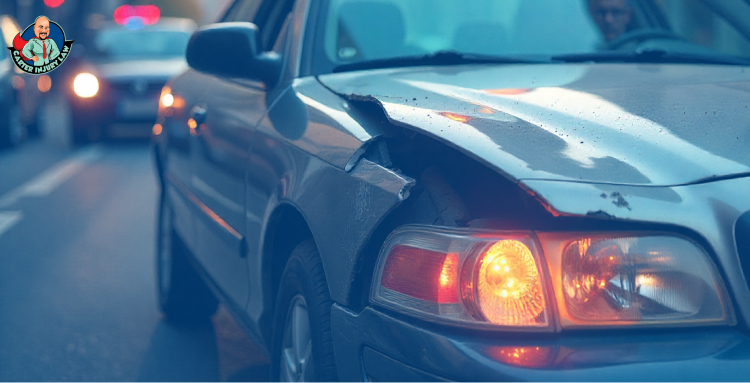
For all their promises, autonomous rideshares are not immune to failure. An accident inside a self-driving car feels painfully familiar. The sound of metal folding, the shock in your chest, the sudden blur of lights, it is the same as any other crash. Only this time, when you look for the driver, there may be no one there.
The truth is that the technology has limits, and when it falters, passengers and bystanders pay the price. These crashes are not caused by speeding teenagers or drunk drivers, but by algorithms misreading the world around them. That difference does not make the injuries less real.
Common causes of autonomous rideshare accidents include:
Software misjudgments: The system fails to recognize a pedestrian, bicyclist, or unexpected obstacle.
Sensor failures: Blind spots in the vehicle’s vision lead to dangerous mistakes.
Backup driver errors: When a human is present, they may be distracted or too slow to take control.
Unpredictable road conditions: Construction zones, sudden weather changes, or aggressive human drivers create challenges that the car cannot always solve.
Crashes involving autonomous vehicles may be fewer in number compared to traditional car accidents, but when they do occur, they raise harder questions. If no one was truly driving, then who is responsible?
After an autonomous rideshare crash, the first question is always the same: who is at fault? In a traditional accident, blame is often traced to a driver’s choices, but when no one is really behind the wheel, the answer is tangled. Liability can shift between multiple parties, and untangling it is not simple.
It might be the rideshare company, which put the vehicle on the road. It could be the manufacturer, whose hardware failed at a critical moment. Sometimes the software developer is at fault, the code that guided the car making a deadly error. And if a human safety driver was inside, they may also share responsibility if they failed to intervene. Florida’s no-fault insurance laws add yet another layer, often leaving victims caught between insurers and corporations pointing fingers at one another.
The complexity is not hypothetical. According to the National Highway Traffic Safety Administration (NHTSA), there were 419 crashes involving vehicles using automated driving systems reported in the U.S. between July 2021 and May 2022. That number may seem small compared to all crashes on Florida roads, but it shows how quickly these incidents are becoming part of the legal landscape.
Fear of this uncertainty is real among drivers and passengers. A 2023 survey from AAA revealed that 68% of Americans said they were afraid to ride in a fully self-driving car, a sharp increase from the previous year. That kind of fear is not just about technology, it is about accountability. People want to know that if the machine fails, they will not be left alone to pick up the pieces.

For all the glossy marketing and sleek designs, the reality of an autonomous rideshare crash feels very ordinary. It is the hospital bills that pile up on the kitchen counter, the days of work missed, the family routines thrown into disarray. The technology might be new, but the suffering it leaves behind is not.
Every promise of progress carries a shadow, and for those caught in an accident, that shadow feels heavier than the hype. The ride was supposed to be simple, a way to get from one place to another. Instead, it became a turning point in someone’s life.
Victims of autonomous rideshare crashes often face:
physical injuries: broken bones, head trauma, spinal injuries, or long-term complications.
emotional toll: anxiety about getting back into a car, sleepless nights, lingering fear.
financial difficulties: medical costs, lost income, and the uncertainty of when or if normal life will return.
legal confusion: struggling to figure out who is responsible and how to hold them accountable.
When the accident fades from headlines, these are the things that remain, shaping the lives of those left behind.
The moments after a crash are confusing, whether the vehicle had a driver or not. In an autonomous rideshare, that confusion can be even sharper. Knowing what steps to take can protect both your health and your rights.
Here are the essentials to keep in mind:
Call emergency services right away: Even if injuries seem minor, having an official record matters.
Document the scene: Take photos or videos of the vehicle, the roadway, and any visible damage or injuries.
Collect information: In rideshare cases, app records, vehicle IDs, and trip details are as important as license plates.
Seek medical care immediately: Some injuries do not show up until hours or days later. Getting checked early helps both your recovery and your case.
Avoid dealing directly with the company: Rideshare or tech companies may reach out, but their goal is to protect themselves.
Contact an attorney: These cases are complex, and having someone experienced in AV liability makes the difference between confusion and clarity.
An autonomous vehicle crash is not the kind of fight anyone should face alone.
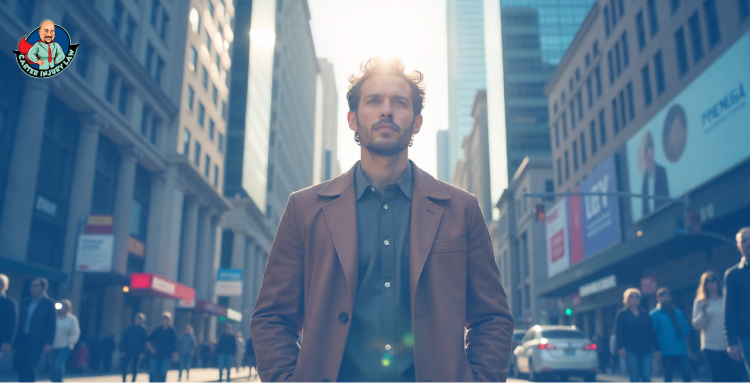
When a rideshare accident with a driverless car shatters your life, the hardest truth is that you are suddenly asked to fight against companies with money, lawyers, and endless time. They protect themselves quickly, while you are left with pain, bills, and questions that never stop. Facing that alone is too much for anyone.
We can see your world has been interrupted, carrying injuries and doubts, and you deserve more than silence from the system. Our work is to clear away the confusion, to stand against those who would avoid responsibility, and to win back what you need to move forward.
We do this on a contingency fee basis, which means you do not pay us unless we win for you. Your focus should be on healing, not on how to afford justice.
If you or someone you love has been hurt in an autonomous rideshare accident in Florida, reach out to us.